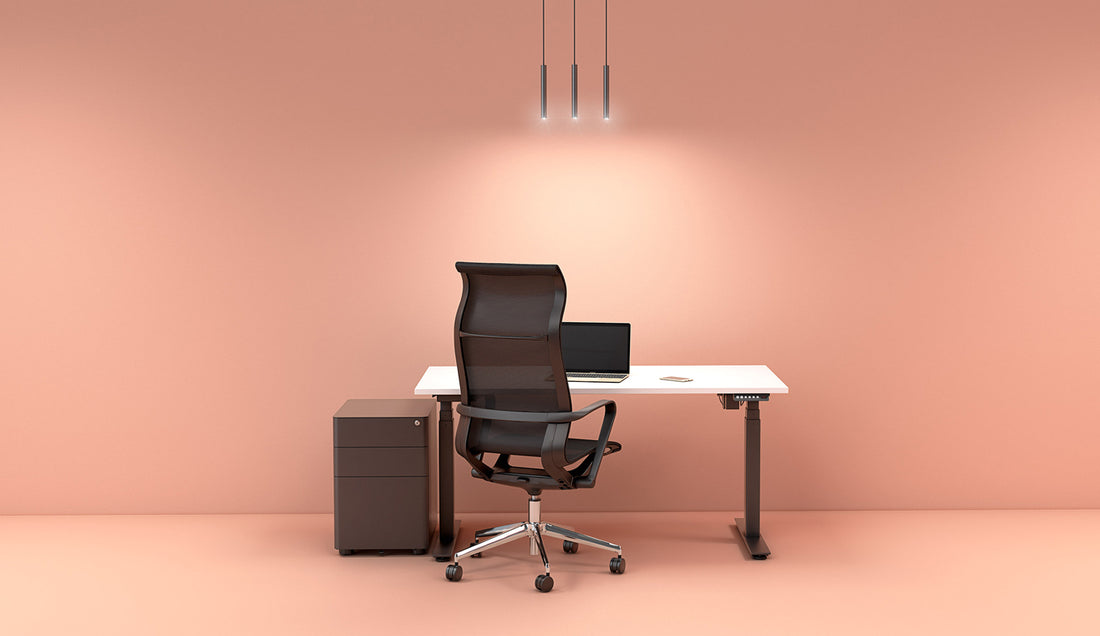Propping yourself up in bed with your laptop is OK for an hour of work during the ‘situation normal’ scenario, but it isn’t a great solution for working from home during Covid-19.
What you really need is a purpose-built workstation that allows you to sit comfortably, see the screen easily and finish the day without aches and pains. Whether your instrument of choice is a laptop or a desktop computer, here’s a step by step guide to getting it right.
Step 1: Get a decent chair
At work you probably have a workstation chair that’s fully adjustable. At home you might be getting by with a dining chair. Here are a few tips to help with your chair choice and set up:
- When you’re sitting on the chair, there should be a fist-size space between the back of your knees and the front edge of the seat. Try various chairs until you find the best candidate.
- Your feet shouldn’t dangle. If they’re not resting flat on the ground, find a footrest of some kind.
- You need lumbar support. If your lower back is unsupported, position a rolled-up towel in the lumbar curve of your back.
- Padding on the seat is very helpful, or you’ll have a sore butt by the end of the day. If the chair has no padding, find a sports cushion.
Step 2: Position the chair at a flat work surface
Your work surface might be the dining table or it could be an office niche with a built in desk. Either way, you need to set it up for ergonomic correctness.
- Your keyboard should sit about 5cm above your thighs. To achieve this, you might need to raise your chair height. If this means your feet are dangling, use a footrest.
- The keyboard should be close enough to ensure your elbows stay at your sides when you’re typing.
- Keep your keyboard flat. Wrist rests that raise the keyboard can lead to carpal tunnel syndrome.
Step 3: Position your screen/s
For all-day working, a desktop computer is better for your body than a laptop. It also means you can run an extra screen to improve productivity. Here’s how to position your screens:
- Position your main screen so that the tip of your middle finger touches it.
- Facing the screen, close your eyes, look straight ahead, then open your eyes. You should be looking at the top area of your screen. Lower or raise the screen to ensure this is the case.
- Position your second screen to the left or right of the main screen. Angle it in slightly, so that your middle finger touches the screen in the centre. Right-handers usually position their second screen to the right; left-handers to the left.
- Screens can be tilted slightly backwards to avoid reflections.
Are you working from a breakfast bar?
If the breakfast bar is the only work space you can find it your home, you’ll be perched on a barstool. Use the foot rest and take plenty of breaks, or your posture’s going to suffer. Another option is to use the breakfast bar as a standing desk. To do this, put your keyboard and screen on a large box. Check that your elbows are by your side when you’re typing.
Can't make it work ergonomically? Order essential home office furniture online
To help New Zealanders work from home. the government has allowed us to offer work-from-home essentials, including office chairs, tables, workstations and height-adjustable desks. Check out our range. We can dispatch most items within 48 hours of ordering, and shipping is free for most orders.



